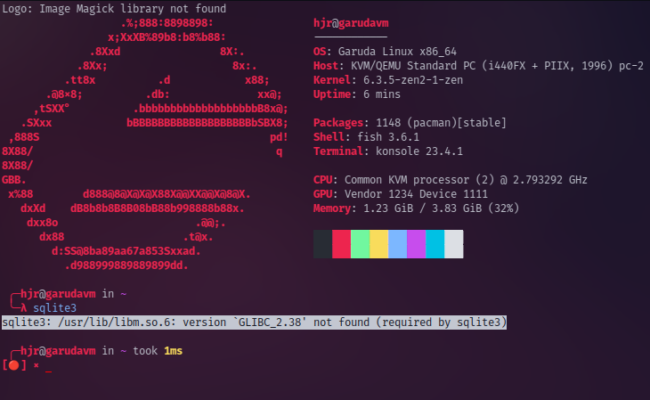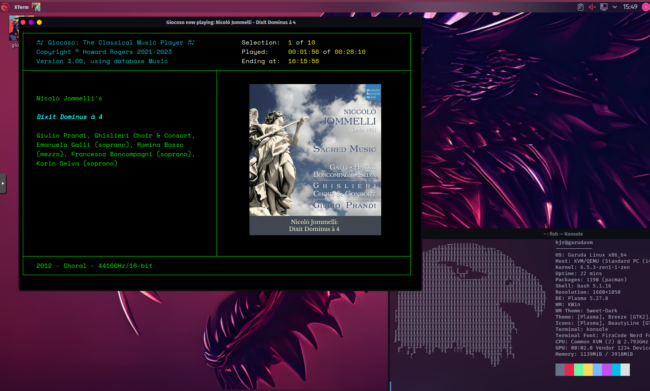 Garuda Linux was first released as a customised, easy-to-install derivative of Arch in 2020. It's principle desktop is KDE Plasma, but Gnome, Cinnamon and others are available. The KDE environment has been 'dragonized' (though their website spells it as "Dr460nized") -and the result is quite an extraordinary, not to say beautiful, desktop. The only slight drawback is that these ancient eyes find knowing what any of the highly-stylized icons which the dragonised themes use actually do! Beauty comes at the expense of actual usability, in this humble hack's opinion anyway! And some people might legitimately think that 'beauty' in this instance long-since crossed the line over into pure garishness 🙂
Garuda Linux was first released as a customised, easy-to-install derivative of Arch in 2020. It's principle desktop is KDE Plasma, but Gnome, Cinnamon and others are available. The KDE environment has been 'dragonized' (though their website spells it as "Dr460nized") -and the result is quite an extraordinary, not to say beautiful, desktop. The only slight drawback is that these ancient eyes find knowing what any of the highly-stylized icons which the dragonised themes use actually do! Beauty comes at the expense of actual usability, in this humble hack's opinion anyway! And some people might legitimately think that 'beauty' in this instance long-since crossed the line over into pure garishness 🙂
Anyway: I found Garuda quite a temperamental distro at times: I made the mistake of installing Giocoso onto a freshly-installed Garuda, without having first fully-updated the Garuda installation itself. The result was that whilst Giocoso appeared to have installed just fine, the sqlite3 installation that underpins the Giocoso music database was fatally broken:
Thinking that this might be fixed by the system update that I'd neglected to do in the first place, I tried a sudo garuda-update (which is what the distro prefers over plain sudo pacman -Syy which would be more normal on vanilla Arch) and received the message that "pacman: symbol lookup error: /usr/lib/libcurl.so.4: undefined symbol: libssh2_session_set_read_timeout"... which is bad and the fix for which is not trivially easy to do. Basically, an install sourced from an older Garuda ISO had been thoroughly borked by having more up-to-date software installed on top of it. The correct approach is to bring the old operating system up to date first, and then installing the newer software Giocoso needs won't cause problems.
The short version, therefore, is: make sure your operating system is fully updated before trying to install Giocoso. That's generally good advice for any distro at any time, of course, but in Garuda's case (uniquely, I have to say), failure to observe its strictures will break your operating system (and result in a broken Giocoso installation, to boot).
Once I'd mastered the trick of updating the operating system before installing Giocoso, the Giocoso installation worked perfectly... and creating a music database worked just fine. Playing music after that also worked fine, including the in-terminal display of album art:
As well as the desktop launcher for Giocoso that's put there as a convenient way of getting Giocoso working swiftly, the Giocoso installer puts a launcher in the main menu, under the Multimedia sub-menu. You can additionally click-and-drag the desktop launcher onto the dock area at the bottom of the screen and thus 'pin' the program to the dock for one-click launching in the future. The desktop launcher itself can then be deleted at a time you find convenient.
[ Giocoso Installation Home ] | [ Arch ] | [ Manjaro ] | [ EndeavourOS ] | [ Garuda Linux ] | [ Bluestar Linux ] |

